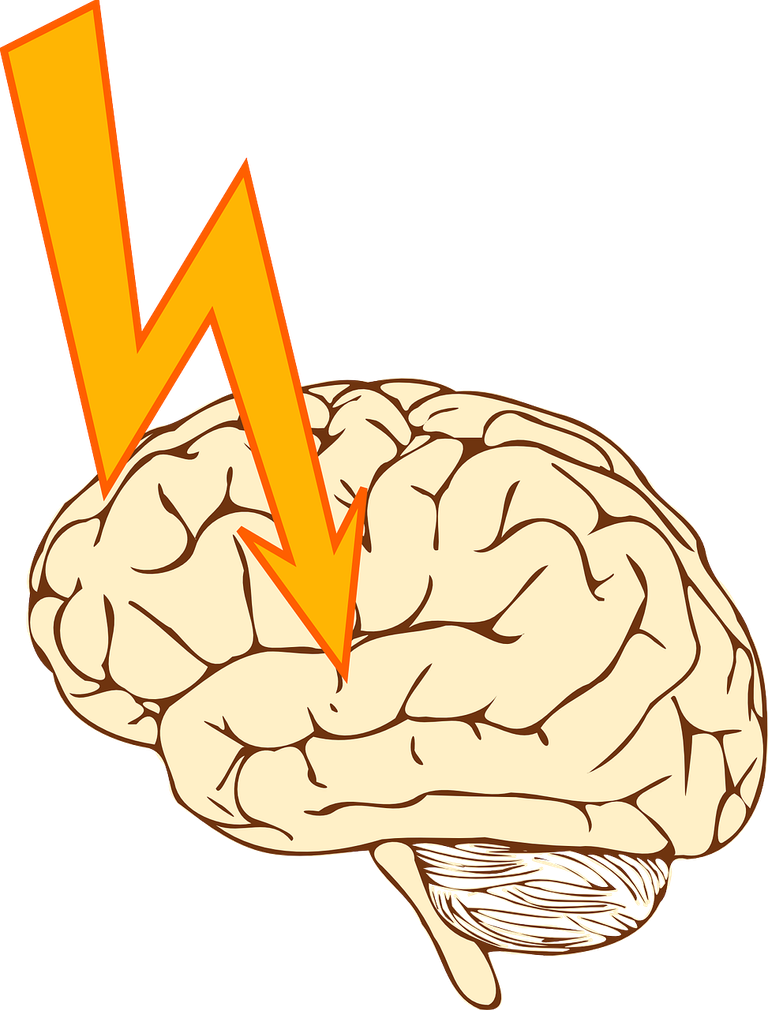Epilepsy is also called seizure disorder, it is a chronic and embarrassing disease, one that comes with so many seizures, the seizure is a result of an abnormal electrical signal that is produced by a damaged brain cell. This creates a burst of uncontrolled electrical activity within brain cells and that is what causes seizures.
The presence of a seizure could cause changes to awareness, emotions, sensations, muscle control, and behavior.
A statistical analysis carried out showed that about 3.4 million people in the U.S. have epilepsy, 3 million out of this number are adults while 470,000 are children. There are new cases of 150,000 yearly, and worldwide, about 65 million individuals are said to have epilepsy.

flickr.com
This is how epilepsy happens;
Normally, the cells in the brain send and receive messages from all areas of the body, these messages are transmitted through a continuous electrical impulse that travels from one cell to another.
Upon the occurrence of epilepsy, there is a disruption to the pattern of rhythmic electrical impulse, and this would then create a burst of electrical energy instead, one that takes the form of an unpredictable lightning storm between the cells in one or more areas of the brain. The presence of this electrical disruption creates changes in sensations, emotions, awareness, and muscle movements.
Epilepsy comes in different forms, and they are classified based on the type of seizure that comes along with it. Categorizing these seizures depends on where they start in your brain, the level of awareness during a seizure, and the presence or absence of muscle movements.
Seizure groups are streamlined into two categories;
The first category is the Focal onset seizures, most likely start on one side of the brain, there are two types of focal seizures, we have;
Focal Onset Aware Seizure; which means the affected person is awake and aware during the seizure, this is also called a simple partial seizure, and it comes with these changes;
- Emotional change.
- Uncontrolled muscle jerking, most often affecting the legs or arms.
- Feeling dizzy, seeing flashlights, and having a tingling sensation.
- Change in senses, the difference in how things smell, sound, or taste.
The second type of focal seizure is;
Focal Onset Impaired Awareness Seizure, also called a complex partial seizure, this type comes with a symptom of being confused or the act of completely losing awareness during a seizure. Symptoms include; the patient staring blankly into space or repetitive movements like smacking of lips, blinking of eye, chewing motions, or hand rubbing.

needpix.com
The second category of seizure based on grouping is Generalized Onset Seizures, in this case, a widespread network of cells is being affected on both sides of the brain at the same time.
Generalized seizures can be further categorized into six different types, we have;
Absence Seizures: This type of seizure would cause the affected patient to stare into space or stare blankly, they may experience minor muscle movements like blinking of the eye, smacking, or chewing. Absence seizures are usually mistaken for the act of daydreaming, often common among children. It initially used to be called petit mal seizures.
Atonic seizures: This type of seizure implies that the patient has lost control of the muscle, or muscles are weak during a seizure. Parts of the body like the head or eyelid may drop causing the patient to fall to the ground during this short seizure phase. It has other names like; drop attack or drop seizure.
Clonic seizure will mean a fast, repetitive stiffening and muscle relaxation. A clonic seizure is said to be the case when the muscle jerks continuously from a second to a minute.
Tonic seizure means the muscle tone of the patient has been greatly increased. In this case, the legs, arms, back and the entire body may be stiff or tensed causing the patient to fall. There could be a case of awareness during the phase of a short seizure.
Tonic-clonic seizures are a combination of tonic and clonic seizures, which means it is a combination of muscle stiffness and repeated rhythmic muscle jerking. It is this form of seizure that people mostly think about when the word seizure is mentioned.
The patient loses consciousness, falls to the ground, the muscle gets stiffened, and there is a jerking that lasts for about one to five minutes. In this case, there could be a bite on the tongue, drooling, as well as a loss of muscle control of the bladder or bowels, making the affected person pee or poop uncontrollably.
- Myoclonic seizures: This type of seizure would cause brief, shock-like muscle jerks, and it only lasts for a couple of seconds.
Seizure triggers are happenings that occur before the seizure, they include; hormonal changes, illness, fever, stress, alcohol intake, dehydration, and the use of certain medications.
The major symptom of epilepsy is recurring seizure, symptoms however vary based on the type of seizure a person has. Seizure signs include; uncontrolled movement of the muscle, loss of muscle tone, muscle jerking, temporary loss of consciousness or awareness, staring into blank space, temporary confusion, problems with speaking or understanding, stomach upset, smacking of the lips, and a faster heart rate.
If epilepsy is not controlled, it could affect the quality of life of a person and cause serious injury and even death. Everyone with epilepsy responds uniquely and unpredictably to treatment, so experts need to be on standby and there is often a need for as many treatments as possible to have a successful treatment of this condition.
These are usually the available treatment options;
- Lifestyle changes.
- Diet.
- Prescribed and approved medications.
- Extracranial neurostimulators.
- Immunotherapy.
- Responsive neurostimulation.
- Deep brain stimulation.
- Brain surgery.
Most times, the exact cause of genetics is not known, but here are some known causes;
Genetics: Some forms of epilepsy will most likely run in families. However, researchers say that even though there is evidence that specific genes are involved, the genes will only increase the risk of epilepsy, and other factors may be involved. Some types of epilepsies occur due to abnormalities and how they affect how brain cells can communicate with one another and could result in abnormal brain signals and seizures.
Brain infections could include; meningitis, brain abcess, neurocysticercosis, and encephalitis.
Conditions that cause the immune system to attack brain cells could lead to a case of epilepsy.
Brain health issues can also cause epilepsy they include the likes of stroke, brain tumors, dementia, and, abnormal blood vessels like malformations, and arteriovenous.
Head injury can happen from vehicular accidents, falls, or any form of blow done to the head.
People with a metabolic condition can have epilepsy as well.
Developmental disorders affect the brain and are a frequent cause of epilepsy, especially for those whose seizures are not controlled with anti-seizure medications.
For Further Studies.
https://utswmed.org/medblog/epilepsy-treatments/
https://www.mayoclinic.org/diseases-conditions/epilepsy/diagnosis-treatment/drc-20350098
https://www.aans.org/en/Patients/Neurosurgical-Conditions-and-Treatments/Epilepsy
https://www.nhs.uk/conditions/epilepsy/treatment/
https://my.clevelandclinic.org/health/diseases/17636-epilepsy

Hi, I am Tobi, a writer, speaker, relationship blogger, and lover of good music. I love making friends and learning from people. If you want to hear me speak on relationships and general life issues, you can find my YouTube channel where you can watch any episode for free, please do not forget to subscribe, friends. I sincerely appreciate every love I get from here, Kindly do well to keep them coming.
